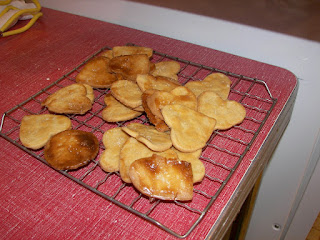Just like a lot of other Americans I like salsa. The tomato-onion-peppers sauce. The music is all right, but I'm more of a classic rock guy. Like a lot of Americans I also have a garden, in which I grow tomatoes, onions, and peppers. Whoa! I bet you can see where I'm going with this. I found recipes on the web through the extension offices of several different states. I have made salsa before when we had a garden and we liked it very much, so since we have a bunch of tomatoes and the onions are in the basement, I thought I would try another batch of salsa.
This is a canning recipe, so if you are new to it, here are a couple of good places to start looking for information.
One thing that the recipes tell you to do is peel the peppers by roasting them and then peeling them. I don't do this for a couple of reasons. 1) I'm lazy. 2)It seems like a lot of work for primarily an aesthetic thing. I know, you'll get these little transparent pieces of skin in your teeth occasionally, but I really don't care about that. If you do, then fire-roast your peppers.
Salsa
- 7 quarts of paste tomatoes (about 11 pounds); peeled, cored, and chopped
- 4 cups of peppers seeded and chopped (Use the heat that you desire)
- 5 cups of onion, chopped
- 1/2 cup jalapeno peppers, cored and diced
- 6 cloves of garlic, minced
- 2 cups lemon or lime juice
- 2 tablespoons of salt (I use pickling salt)
- 1/2 tablespoon black pepper
- 2 tablespoons ground cumin
- 3 tablespoons dried oregano
- 2 Tablespoons fresh cilantro, finely minced
If you used paste tomatoes (like Roma) you probably can get by simmering for about 20 minutes to a half hour. I didn't have enough of those, so my tomatoes were juicier than paste tomatoes. I let it cook down about an hour or so because I hate watery salsa. Add the cumin, oregano, and cilantro for the last 20 minutes or so.
Then, prepare your jars and lids, fire up your water-bath canner (which you should have had warming up for awhile), and put the salsa in jars. Process in boiling water for a time appropriate to your altitude. It's usually 20 minutes where I'm at in Wyoming. Enjoy!


















